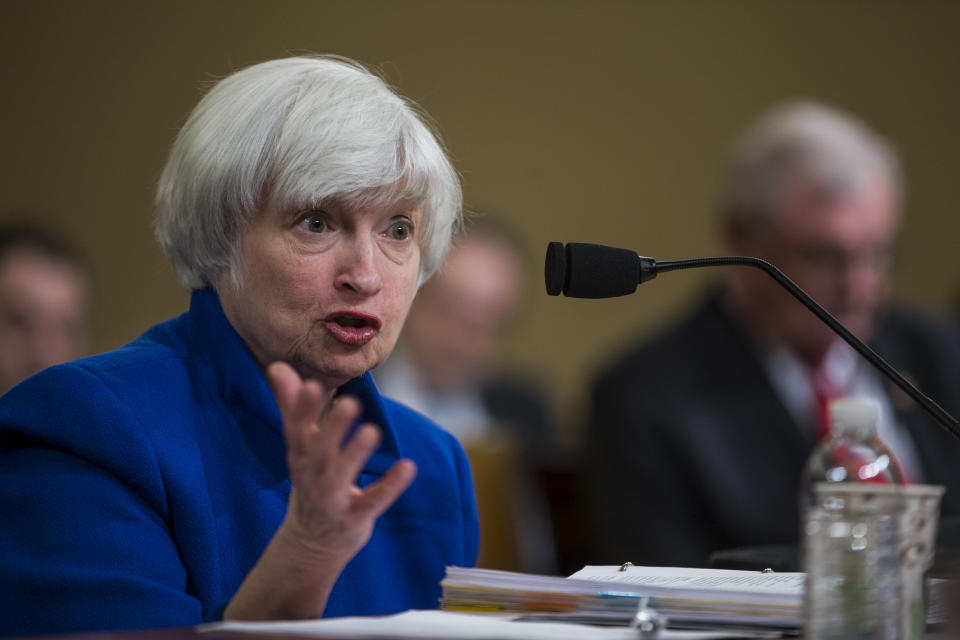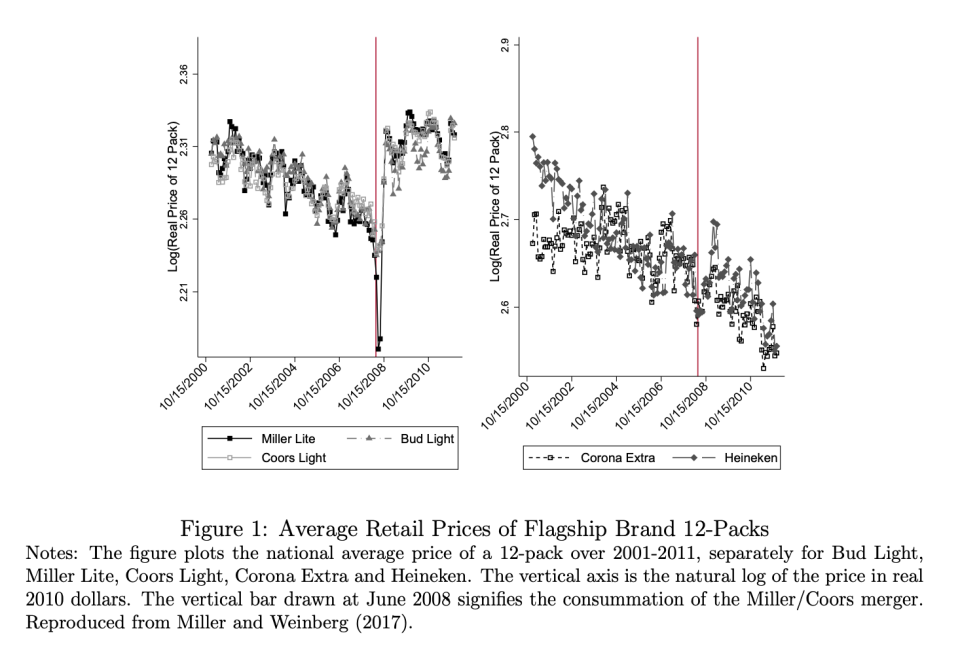5 major themes from this year's largest gathering of economists
Every January, thousands of economists from all over the world convene in one convention center to share their research on topics ranging from health epidemics to machine learning.
Yahoo Finance was on-site in San Diego for the conference and highlights, which revealed five big topics that could be game-changers for the field of economics.
Central banks have their hands tied
With interest rates as low as they are around the world, central banks are continuing to emphasize the need for governments to enact fiscal policies to stimulate economic growth.
The worry: a macroeconomic shock could back central banks against zero rates again, forcing them to use unconventional tools like quantitative easing or negative interest rates.
Former Fed Chair Janet Yellen said Sunday that with interest rates so low, fiscal policy-makers should do their part to stir economic activity.
“Even under current conditions, I think we can afford to increase federal spending or cut taxes to stimulate the economy if there is a downturn,” Yellen said. She specifically advocated for “automatic stabilizers,” which adjust fiscal policies like the income tax and welfare based on how fast or slow the economy is growing.
Former Minneapolis Fed President Narayana Kocherlakota told Yahoo Finance in an interview that Congress should be willing to spend amid low borrowing costs on U.S. government debt.

“There’s such an appetite for pieces of paper with the U.S. Treasury on it, we should be taking advantage of that for our citizens,” Kocherlakota said.
San Francisco Fed President Mary Daly and Dallas Fed President Robert Kaplan said slower growth is a result of falling labor force participation, suggesting that policy changes to job retraining programs or immigration could help.
Economics suffers from a crippling lack of diversity
After a panel at last year’s economics conference focused on improving the economic profession for women, the conference organizers were challenged to cover its well-known problem with race as well.
In a sobering speech on Friday, Yellen said economics suffers from levels of diversity worse than in STEM (science, technology, engineering, and math) fields. And worse, the economics field has seen diversity decline in recent decades.

“Let me emphasize that our focus is not on whether there is a race problem in economics,” Yellen said. “That’s been abundantly documented. Statistics show minorities are significantly underrepresented.”
Failure to diversify the field of practicing economists risks publishing work that advances only white, male perspectives on topics and issues that people of all genders and all races have stakes in.
Trevon Logan, an economist at The Ohio State University, said one problem with the economics field is a lack of institutional commitment to a pipeline of diverse students.
“We have far too many administrators at our institutions who simply do not hold people accountable on their failures in terms of diversity,” Logan said.
Considering green policy
Several sessions at this year’s conference examined climate change and its impact on different types of economies.
At the European Central Bank, newly minted president Christine Lagarde is exploring ways to possibly incorporate climate change into its economic modeling. And in November of last year, the San Francisco Fed hosted its first ever conference focused on climate change.
Esther Jeffers (University of Picardie) and Dominique Plihon (University Paris 13) suggested that much of the corporate debt absorbed by the ECB during quantitative easing favored high-carbon sectors. The researchers argue that the central bank would have been better off buying “green bonds,” or debt issuances for environmentally friendly projects, because they come with the promise of long-term and sustainable economic growth.
But not all central bankers are on board with the idea of central banks taking too strong a stand on climate change-related policies.
“It is not the job of the central bank to make policy where parliaments and legislatures have not made policy,” former Reserve Bank of India Governor Raghuram Rajan told Yahoo Finance. “Don’t use financial stability as an excuse to do get corporations to do something about climate risk.”
Technology is shifting pricing power
The race for scale has led to increasing pricing power, in beer and in healthcare.
Research from Nathan Miller, Gloria Sheu, and Matthew Weinberg looked at prices of beer brands before and after massive mergers like Miller and Coors in 2008. Their finding: prices rose sharply for both Miller and Coors light beers after the merger, as did competitors like Bud Light. In an oligopoly, players exhibit a “leader/follower” trend, where a first mover raises prices and competitors follow suit.

Another paper, from Colleen Cunningham, Florian Ederer, and Song Ma, combed pharmaceutical industry data for a different trend. The question: is a drug project acquired in a merger less likely to be developed when it overlaps with an existing project at the acquiring company?
Their findings: about 6% of all acquisitions involve “killing” the acquired project, raising questions about whether the acquiring companies are taking out competition to raise prices on their products.
Although both papers focus on narrow industries, the topic is being closely watched by economists who wonder about the larger-picture consequences (on labor markets, for example) of companies chasing scale.
Skepticism that the Fed’s same tools will work again
The Federal Reserve is worried that it lacks the tools to battle the next economic downturn. Fed Chairman Jerome Powell has expressed little interest in negative interest rates, but with rates currently at 1.5% to 1.75%, the central bank lacks the 500 basis points of policy space it has historically needed to fend off recessions.
But Powell’s predecessor, Ben Bernanke, put forth a dramatic call on Saturday for the Fed to review its toolbox. Bernanke said the Fed should at least “consider maintaining constructive ambiguity” about negative short-term rates since it could “provide useful policy space.”
Bernanke added that he believes in quantitative easing and forward guidance, but put forth another proposal if policymakers see a neutral rate (the longer-run interest rate level that is neither stimulative nor restrictive for the economy) substantially below 2%: raising the inflation target.
Bernanke estimated that raising the inflation target from 2% to 5% would have the same effect as quantitative easing and forward guidance: about 300 basis points of policy space.
Brian Cheung is a reporter covering the banking industry and the intersection of finance and policy for Yahoo Finance. You can follow him on Twitter @bcheungz.
America's economy needs to pull more workers into the labor force: Fed officials
Fed holds steady on rates, may continue to hold through 2020
‘The weirdest place in the world’: What the Fed missed in Jackson Hole
Read the latest financial and business news from Yahoo Finance
Follow Yahoo Finance on Twitter, Facebook, Instagram, Flipboard, SmartNews, LinkedIn, YouTube, and reddit.
